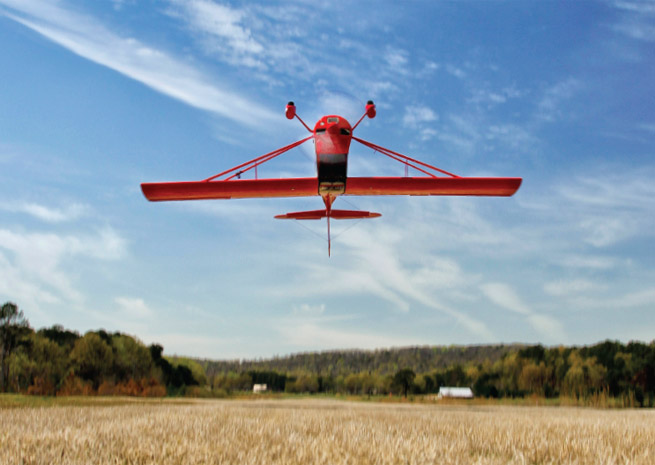Technique: What to do if you’re upside down
Why you need a beginner aerobatic course

Airshow star and aerobatic instructor Greg Koontz will gladly give you his one-flight upset training course if you insist, but he knows you probably won’t remember it a year later. That’s why he tries to steer clients towards a four-flight basic aerobatics course (see “Can Airshows Come Back?”).
“I don’t really feel like someone is going to walk away, and six months later get in trouble, and do anything but say, ‘What was that Greg said to do here?’ It’s too late,” Koontz said. “It’s [for them] a procedure they’ve got to call up, instead of a way of thinking—a way of understanding. I feel like people need more to understand what they’re doing.”
The point of aerobatic training is to fly the aircraft precisely and under control in exactly the attitudes most pilots fear.
Koontz, retired from a corporate pilot career, is a full-time aerobatic instructor at his ranch in Ashville, Alabama, a 45-minute drive northeast of Birmingham. Students are free to move into one of his two extra bedrooms for longer courses.
“It’s a three-dimensional world up there, and we’re two-dimensional people,” Koontz said. “It’s not natural to us. We don’t have feathers poking out anywhere.”
Today’s flight training is taught as a two-dimensional exercise. “Don’t bank too much. Don’t pitch too much. Keep your passengers comfortable,” he said. “Even the airlines have the windows real low so you can’t see the motion and get airsick. They want the passengers to feel like they’re still on the ground.”
If that two-dimensional world gets upset, he said, pilots need to have three-dimensional thinking in their toolbox.
“Our airplane flies along with 3,000 pounds of lift overcoming 3,000 pounds of gravity. That keeps us in a world we’re very familiar with. As long as lift is going up against gravity that is going down, we can sip our tea and fly along and eat a cracker, and everything’s nice. As soon as that world gets upset, and that lift points another direction, all hell breaks loose.
“When you’ve got that 3,000 pounds of lift pointing down, plus gravity, you’ve got a 6,000-pound pull [on the airplane]. When that airplane flips upside down, for an instant everything seems fine, but it immediately starts pulling towards the ground. [During an] attempt to roll the airplane, within a quarter of a roll you’ll be pointed straight down.
“It takes a long time to think it through when you’re turned upside down. What we’re more likely to do is pull. After thousands of students, I’ve seen people come out here, and no matter what I’ve explained to them on the ground—if I flip them over in the air before they have had any practice—they’re gonna pull.
“In reality we’ve got to get rid of that lift and go at least to zero G, and then roll the airplane. It takes training and it takes time. It takes more than one flight. It takes a number of flights to build up an understanding of three-dimensional flight,” Koontz said.
He suggests the four aerobatic fundamentals: loops, rolls, hammerheads, and spins. All of those maneuvers require three-dimensional thinking. The loop, for example, teaches you how to get out of a dive, but the roll is the most important thing. “When a person has a good roll, they can get out of anything,” he said. He teaches rolls on all four flights, for a total of at least 20 by the end of the four-flight course.
Koontz has taught continuously since 1993, training 16 to 80 students a year. More than half of them did not come so they could do aerobatics after they leave. They came to improve their general skills, Koontz said. The course is $1,390, but includes a room in his home and breakfast. A few insist on the one-flight upset course for $300. “If they want it, I definitely want them to have something,” Koontz said. Some people get it and do well, while some are frustrated after one flight.
Koontz worked for eight years as chief pilot for Aero Sport in St. Augustine, Florida, and learned aerobatics from the late Jim Moser and Moser’s fellow aerobatic pilots.
So did any of his students save an aircraft after it tumbled out of control? “It goes the other way,” Koontz said. “They prevented the aircraft from getting into such an attitude in the first place.”
Web: www.gkairshows.com
Email [email protected]
Lincoln Beachey is considered the “father of aerobatics.” During the Barnstorming era of the 1920s and 1930s, he flew to 5,000 feet, turned off the engine, and dove straight down—only to pull up at the last second in his act, the “death dip.”



